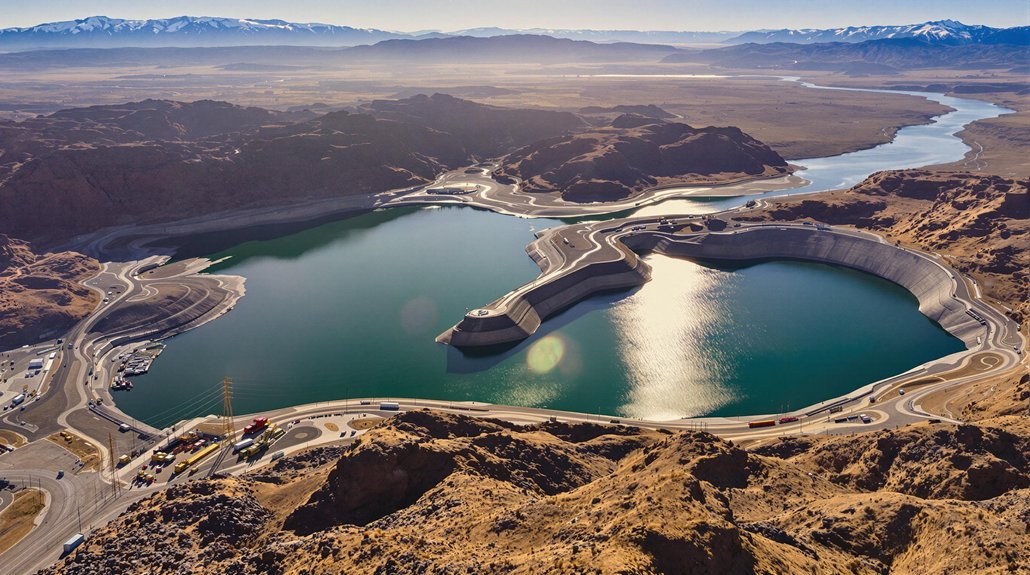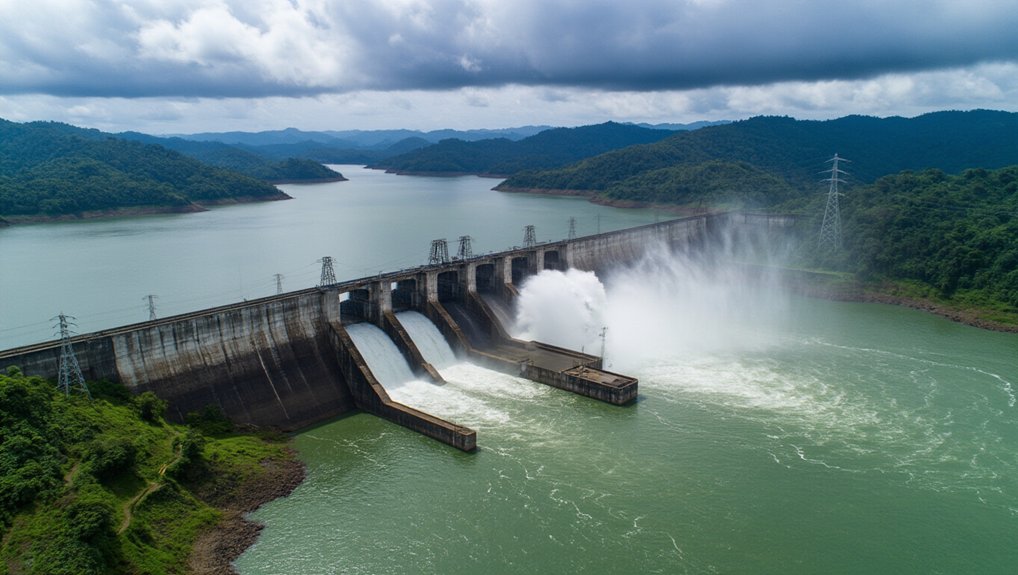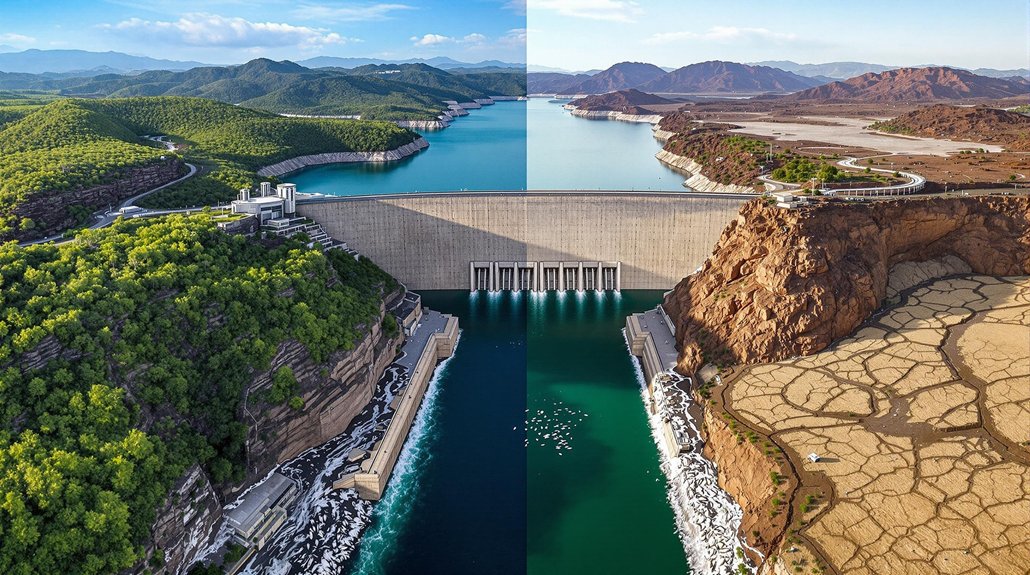A $1.5 billion pumped-storage hydropower facility is coming to Moffat County, Colorado. The project will generate 600 megawatts, enough to power 250,000 homes. It’s designed to replace coal operations closing by 2030, creating hundreds of construction jobs and 35-40 permanent positions. The closed-loop system requires minimal water from the Yampa River. Public comments are accepted until May 26, 2025. The project’s 100-year lifespan could transform the region’s economic future.
A massive $1.5 billion pumped-storage hydropower facility is taking shape southeast of Craig, Colorado. The Moffat County Hydro Project isn’t just another energy venture—it’s a potential lifeline for a region facing the imminent closure of its coal mines and power plants by 2030. Who knew water could replace coal? Progress, folks.
The ambitious project will generate 600 megawatts of power over an eight-hour storage period, enough to power up to 250,000 homes depending on when you flip the switch. It’ll produce over a million megawatt-hours annually. That’s a lot of Netflix binges and air conditioning.
Construction will create 300-500 jobs over five to six years. Once completed, 35-40 permanent staff will keep things running. Not too shabby for a county needing economic reinvention. The facility will also pump up the local property tax base, helping fill the void left by departing coal operations.
The system works by connecting two artificial reservoirs with underground tunnels. Water flows downhill when power is needed. Simple physics, really. During off-peak hours, excess grid energy pumps water back up. Rinse and repeat. The technology has an impressive 100-year lifespan without requiring additional water diversions. The facility’s design achieves 90% efficiency in converting water energy to electricity, significantly outperforming other renewable sources.
Environmental impact? Minimal, supposedly. The closed-loop system requires an initial 4,000 acre-feet from the Yampa River, plus 600 acre-feet yearly to replace what’s lost to evaporation and seepage. That’s considerably less than other regional reservoirs use.
The Federal Energy Regulatory Commission has already issued a preliminary permit. Six private landowners have agreed to host this underground marvel on their 170 acres. Most infrastructure will stay below ground—out of sight, out of mind.
Public comments are being accepted until May 26, 2025. Got opinions? They want to hear them. Final approvals still require environmental assessments and water rights applications. The project aims to repurpose water rights previously tied to coal operations. Waste not, want not.
The developers, rPlus Hydro, are based in Salt Lake City and bring experience from other renewable energy projects including a similar 900-megawatt pumped storage facility in Wyoming.








